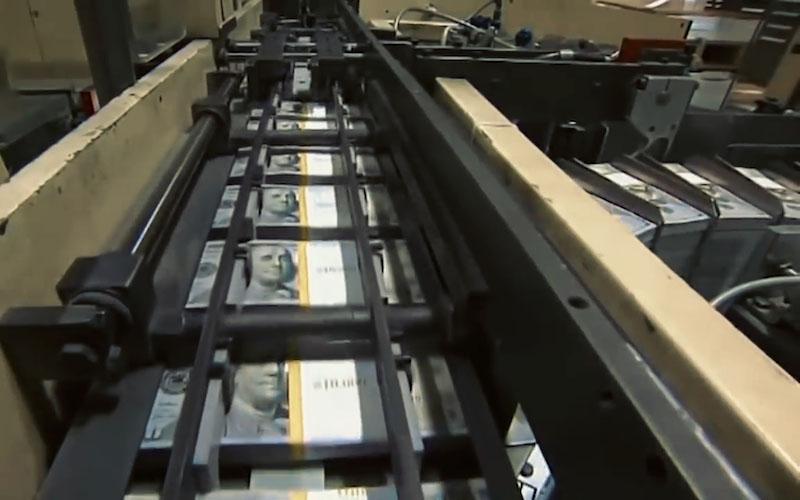Trump's "self-defeating" stance, from pushing for rate cuts to firing senior labor officials, puts pressure on both the dollar and market confidence.
2025-08-05 15:08:24

Angry at the Fed: The spark behind the rate cut debate
Criticizing Powell, firing on all cylinders
Over the past six months, Trump's criticism of the Federal Reserve has been relentless, with his discontent with Chairman Powell reaching a peak. He has repeatedly publicly accused Powell of failing to cut interest rates in a timely manner, thus hindering the US economy. Last Friday (August 1st), before the release of the July jobs report, Trump went all out on social media, calling Powell a "stubborn idiot" and blaming his slow monetary policy for the economic downturn. This fiery rhetoric not only ignited market attention on Fed policy but also hardened Trump's stance.
Employment data ignites the market
The July jobs report was a bombshell, completely shifting market expectations. The report showed a combined downward revision of 258,000 non-farm payrolls for May and June, a figure far exceeding expectations. According to Goldman Sachs, this was the largest two-month revision outside of a recession since 1968. The weak jobs data triggered a sharp market reaction: the two-year Treasury yield fell by the most in a year, the US dollar plummeted, and market expectations for a Federal Reserve rate cut rapidly intensified. Based on pricing in the interest rate futures market, investors are virtually certain that the Fed will cut interest rates by 25 basis points next month, with another cut in December. This stands in stark contrast to the hawkish comments delivered by Powell 48 hours earlier after the Federal Open Market Committee (FOMC) meeting, when he hinted that no rate cut this year was possible.
Trump's chance for a "victory declaration"
Faced with weak employment data and strong market expectations for a rate cut, Trump had the opportunity to assert his judgment and emphasize that Powell's hesitation in cutting rates was a mistake. His criticism of "moving too slowly" seemed to be somewhat vindicated by the market. However, Trump chose not to adopt this strategy. Instead, he made a shocking decision that completely changed the course of events.
The dismissal controversy: A surprising act of political interference
Unfounded accusations against the Bureau of Labor Statistics
Just as the jobs data sent shockwaves through the market, Trump announced last Friday afternoon the dismissal of Erika McEntarfer, the director of the Bureau of Labor Statistics, accusing her of fabricating the employment data. However, this accusation, lacking any substantive evidence, sparked a strong backlash from economists, analysts, and investors. They condemned Trump's move as blatant political interference, an attempt to mask weak economic data by purging officials. Such actions not only cast doubt on the impartiality of independent American institutions, but also served as a mirror image of unstable developing countries, contradicting the US's self-proclaimed image as the "leader of the free world."
Economists object
Trump's decision quickly ignited outrage in the academic and financial communities. Economists pointed out that the data revisions do not indicate a problem with the Census Bureau. Ernie Tedeschi, economics director of the Yale Budget Lab, stated on the X platform that the accuracy of the Bureau of Labor Statistics' initial non-farm payroll data is improving, not declining. Fluctuations and revisions in employment data are normal. Trump's unfounded accusations are not only unfounded but could further undermine market confidence in US economic data.
A crisis of confidence: Cracks in American exceptionalism
The foundation of independent institutions is shaken
America's exceptionalism is largely built on trust in independent institutions. Whether it's the Federal Reserve or the Bureau of Labor Statistics, these agencies are renowned for their professionalism and independence, and their data, whether good or bad, is considered objective and reliable. However, Trump's attacks on these institutions, particularly the BLS, have directly undermined this foundation. It's worth noting that the BLS is responsible not only for employment data but also for inflation data, both of which are crucial to the US and global economies. If the credibility of these data is questioned, market uncertainty will increase significantly.
The hidden danger of risk premium
Rebecca Patterson, a senior fellow at the Council on Foreign Relations, warned that if skepticism about independent institutions persists, investors will demand higher risk premiums to hold US assets. This means returns in US financial markets could be limited, putting further pressure on asset valuations. Rising policy uncertainty has refocused investors' attention on the Trump administration's next moves. After gradually receding since the "Liberation Day" tariff storm on April 2, policy uncertainty has once again become a focus of market attention.
Changes in the Federal Reserve and future uncertainties
Power transition on the Federal Reserve Board
This turmoil coincides with the resignation of Federal Reserve Governor Adriana Kugler last Friday, giving Trump the opportunity to nominate a third member of the Fed's seven-member board of governors. This new governor could be a potential successor to Chairman Powell, at least until his term ends in May 2026. The new nominee is likely to favor a more dovish monetary policy, consistent with Trump's consistent advocacy of accommodative policies. However, this personnel shakeup has further exacerbated market concerns about the Fed's independence.
Interest rate cut expectations and market speculation
Market expectations for a Federal Reserve rate cut have rapidly shifted from "no rate cut this year" just 48 hours ago to "definitely a cut next month." This dramatic shift in expectations not only reflects the shock of the jobs data but also highlights the impact of Trump's policies on market sentiment. However, his interference in independent institutions may make this victory seem Pyrrhic. Market uncertainty is rising, and investor confidence in the US economy and policy direction is wavering.
Future Outlook: Double Tests for the US Dollar and Market Confidence
Overall, Trump's aggressive actions have not only failed to reinforce his policy stance, but have instead sparked widespread market doubts about the credibility of US economic data and independent institutions. Surging expectations of a Fed rate cut are putting short-term pressure on the US dollar, while political interference and tariff uncertainty could pose a threat to its long-term outlook. Investors should closely monitor the upcoming release of the US ISM Services PMI data and the latest statements from Fed officials to gauge the dollar's future trajectory. Amidst heightened global economic uncertainty, whether the US dollar can maintain its resilience and whether market confidence in US assets can be restored will be key areas of focus for the foreseeable future.
At 15:07 Beijing time, the US dollar index was at 98.84.
- Risk Warning and Disclaimer
- The market involves risk, and trading may not be suitable for all investors. This article is for reference only and does not constitute personal investment advice, nor does it take into account certain users’ specific investment objectives, financial situation, or other needs. Any investment decisions made based on this information are at your own risk.





















